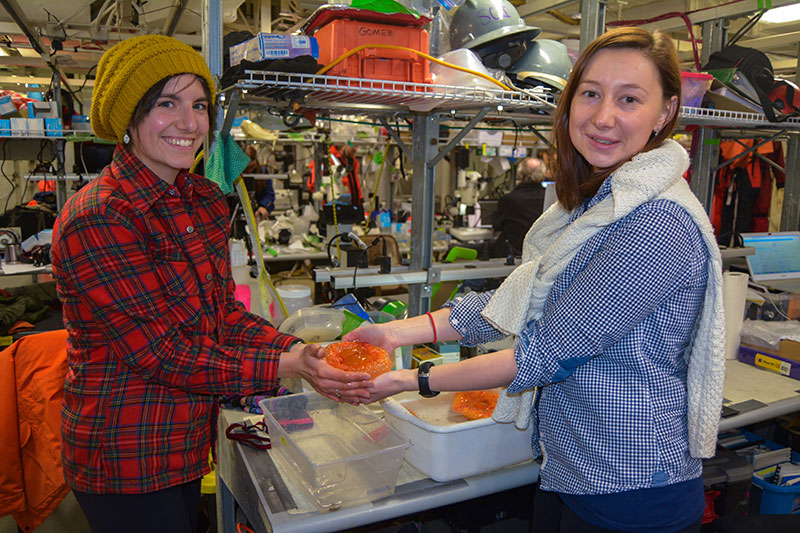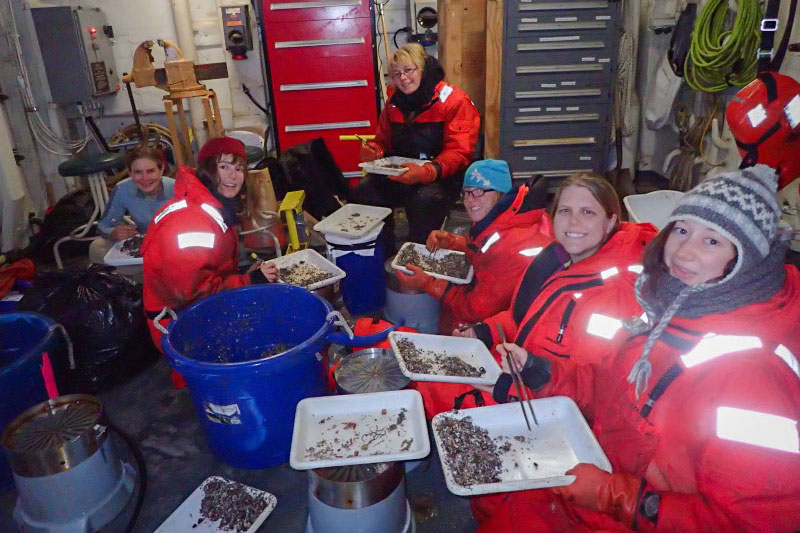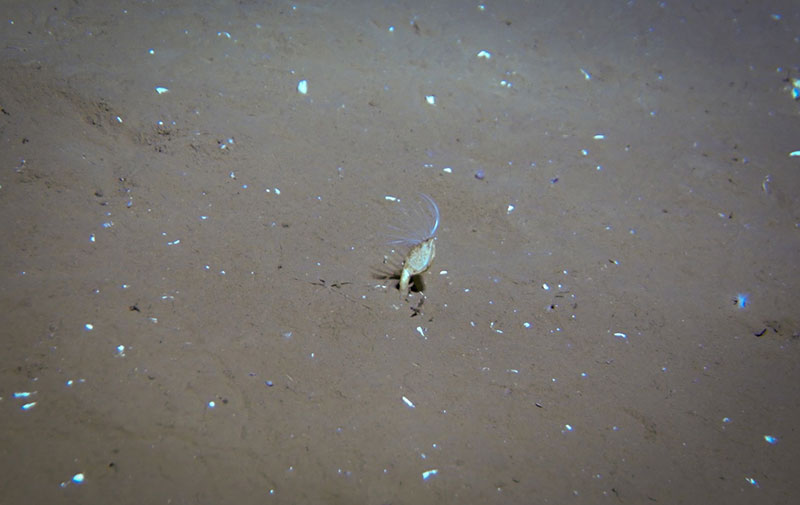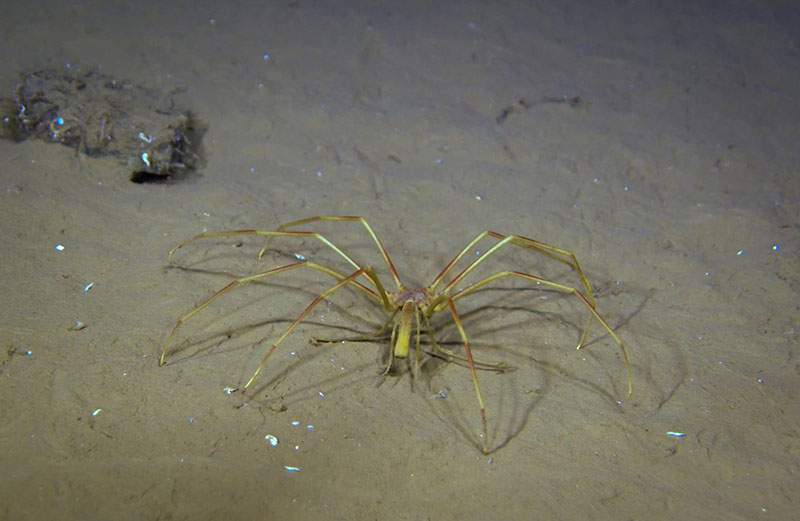
By Irina Zhulay, PhD Student, Arctic University of Norway
July 30, 2016

Lauren Sutton and Irina Zhulay hold a large anemone that was collected by the ROV. Image courtesy of Irina Zhulay, Arctic University of Norway, The Hidden Ocean 2016: Chukchi Borderlands. Download larger version (5.1 MB).

Members of the science team sort through rocks and mud to look for animals from the trawl. Image courtesy of Lauren Sutton, UAF, The Hidden Ocean 2016: Chukchi Borderlands. Download image (122 KB).
The realm of the deep sea is a world of cold temperatures, tremendously high pressure, inky darkness, and very limited food. Just about two centuries ago, some scientists believed that life could not exist below 55 meters depth. The term “deep sea” is used for depths of 200 to over 6,000 meters. We now know that life can not only survive, but thrive in the deep sea, even at the bottom. I am a PhD student at the Arctic University of Norway, studying organisms that live on the Arctic Ocean floor. These animals are known as benthos, meaning “depth of the sea”. Could any creature possibly make the inhospitable Arctic Ocean floor their home? Yes! In fact, there are more than 1,000 species of Arctic benthic animals and they are highly adapted to living in this seemingly hostile environment.
On the U.S. Coast Guard Cutter Healy, I am a member of the benthic team lead by Katin Iken. Part of my work is to study the epibenthos (benthos occupying the top of the sediments). To study these organisms we are using traditional tools, such as the trawl (read about the trawl here). Samples collected by the trawl help us understand what animals live on the ocean floor, plus their size, abundance, and body structure. So far we have found many interesting benthic creatures of different sizes and shapes. These animals include echinoderms (e.g., brittle stars, sea stars, sea cucumbers), crustaceans (e.g., shrimps, amphipods and even barnacles), molluscs (such as bivalves and snails), sponges, worms, and others.

The Global Explorer ROV captures footage of a barnacle projecting its limbs to filter food from the water column. Image courtesy of of The Hidden Ocean 2016: Chukchi Borderlands, Oceaneering-DSSI. Download larger version (478 KB).

During a dive, the Global Explorer ROV imaged this pycnogonid, also called a "sea spider," though they are not true spiders. Image courtesy of The Hidden Ocean 2016: Chukchi Borderlands, Oceaneering-DSSI. Download larger version (731 KB).
More than that, we have an opportunity to venture into the benthic creatures’ environment with the sophisticated ROV (see ROV log) and thus expand our understanding of the mysterious world of the deep sea bottom. This is a wonderful tool not only to describe the animals’ environment, but also to observe the behaviour of the benthic creatures, their interaction with each other, and components of the environment itself. During the expedition, we have seen many wonderful examples of these interactions. For example, life gets more diverse and abundant around hard substrates, which are rare in the deep sea. Many beautiful anemones will cling to rocks, which shrimp also cover, and amphipods are found sitting on stalked crinoids (“sea lilies”). We were also able to observe swimming brittle stars, which are usually described as an animal crawling the seafloor. We have seen huge sea spiders, a “forest” of anemones, and many other exciting things.
The world of the deep seafloor is very interesting to study, especially in one of the most remote and hardly accessible places on Earth – the Arctic Ocean. By doing that, we are adding to relatively poor knowledge of the Arctic deep-sea benthic fauna.